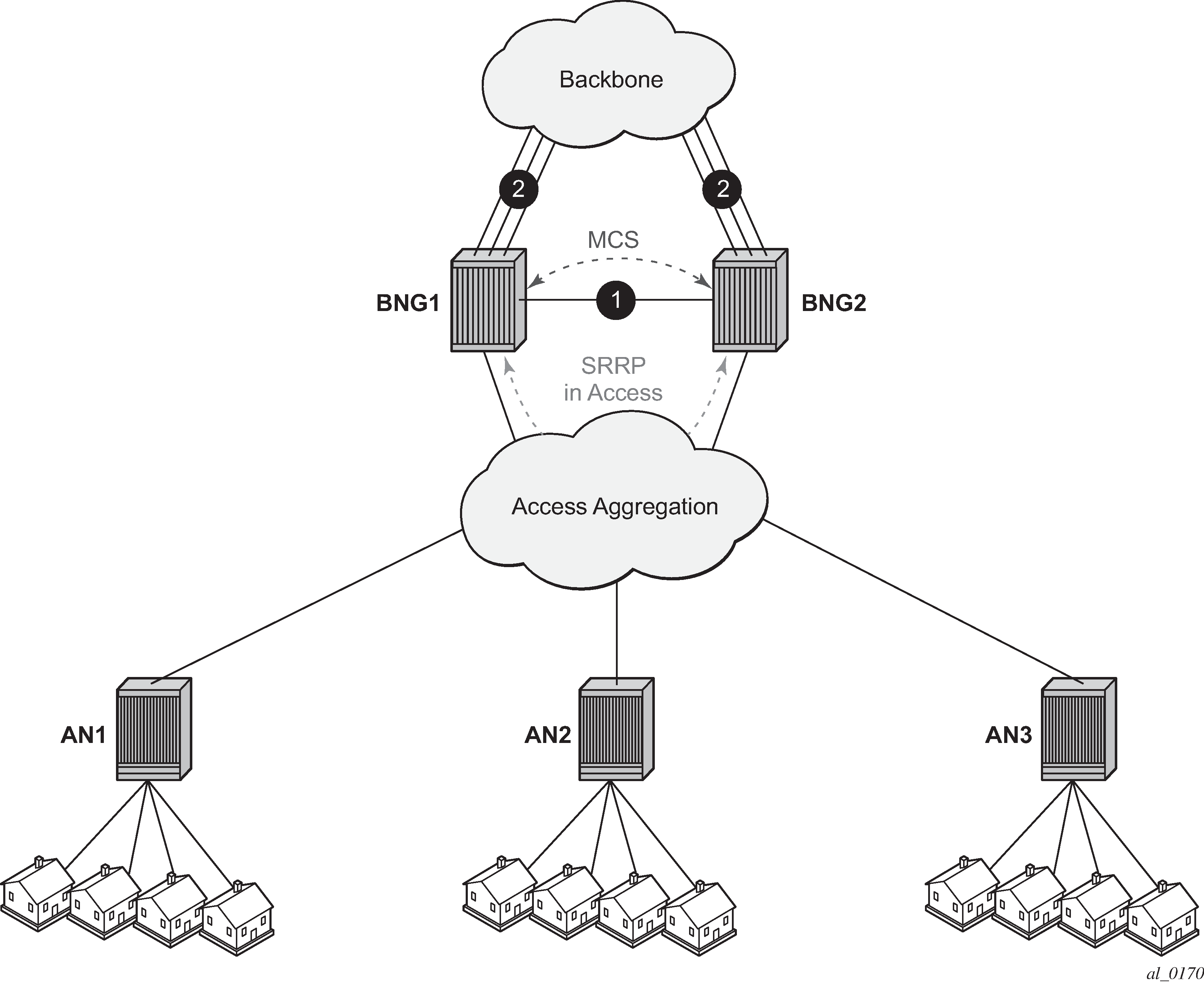DHCP server leases are synchronized over Multi-Chassis Synchronization (MCS) protocol. A DHCP lease synchronization message is sent to the peering node just before the DHCP ACK/Reply is sent to the client.
For example, the message flow for DHCPv4 lease establishment is the following:
DHCP discover |
DHCP client — DHCP server |
DHCP Offer |
DHCP server — DHCP client |
DHCP Request |
DHCP client — DHCP server |
DHCP Sync Message |
DHCP server — by MCS to the peering DHCP server |
DHCP Ack |
DHCP server— DHCP client |
DHCP server failover mechanism in the local-remote IP address-range and prefix model relies on the detection of the failure of the link over which DHCP states are synchronized (through the MCS protocol). This link is normally disjointed from the access links toward the clients. MCS protocol normally runs over a direct link between the two redundant nodes (1) or over backbone links (2) if the direct link is not present. This is shown in Figure: Redundancy model.

In the access-driven IP address-range and prefix model, the DHCP server address-ranges and prefixes are not tied to the state of the intercommunication link. Instead, the DHCP server selection for IP address assignment is only governed by the path selected by the path protection mechanism (SRRP/MC-LAG) deployed in the access part of the network.